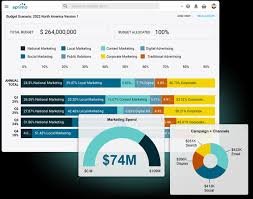Relocating without a job lined up may sound risky, but with the right planning, it can be a strategic move toward better opportunities, lower living costs, or a fresh start. In 2025, more people are embracing flexible careers, remote work, and gig-based income—making jobless relocation more feasible than ever. Here’s how to relocate without a job in the USA smartly and securely.
Why Move Without a Job?
While it’s ideal to have employment secured before relocating, people choose to move without a job for many valid reasons:
- Escaping high cost-of-living areas
- Moving closer to family or support networks
- Seeking better job markets
- Pursuing education or personal growth
- Starting a new business or remote work
The key is to treat the move like a calculated risk—one that’s backed by planning, budgeting, and preparation.
Smart Moving Tips to Relocate Without a Job USA
1. Build a Relocation Budget First
Before you pack a single box, create a detailed relocation budget. Include:
- Moving costs (truck rental, gas, supplies)
- Security deposit and first month’s rent
- Utilities and setup fees
- Food and transportation
- Emergency fund (ideally 3–6 months of expenses)
Tip: Save at least $3,000–$7,000 depending on the city you’re moving to and your lifestyle needs.
2. Choose an Affordable Location
When you plan to relocate without a job in the USA, avoid expensive cities like San Francisco or New York. Instead, target affordable cities with:
- Low cost of living
- Strong job markets
- Reasonable rent
- Public transportation
Top affordable cities to consider in 2025:
- Tulsa, Oklahoma
- Huntsville, Alabama
- Des Moines, Iowa
- Knoxville, Tennessee
- Pittsburgh, Pennsylvania
3. Secure Temporary Housing
Avoid locking into a long-term lease immediately. Use short-term rentals or stay with friends/family while you job hunt. Consider:
- Sublets
- Extended-stay motels
- Airbnb monthly rentals
- Shared housing or roommates
This gives you flexibility and reduces financial pressure while you get settled.
4. Start Job Hunting Before the Move
Even if you’re not hired yet, start applying early. Update your resume, LinkedIn, and portfolio. Mention your relocation plans in your cover letter, and offer a local address if possible (use a friend’s or rental if needed).
Key strategies:
- Apply to remote or hybrid jobs
- Use job boards like Indeed, FlexJobs, and LinkedIn
- Join local Facebook job groups or community forums
- Reach out to recruiters in your target city
5. Tap Into Gig Work or Side Hustles
Until you land your ideal job, supplement your income with flexible work like:
- Rideshare (Uber, Lyft)
- Food delivery (DoorDash, Uber Eats)
- Freelancing (writing, design, coding)
- Online tutoring or teaching
- Virtual assistant roles
In 2025, gig work is more accessible than ever and can be a financial lifesaver during transition.
6. Network Before and After You Move
Start building your local network before arrival. Once you’re in the city, attend events, meetups, or industry mixers. Try:
- Local Chamber of Commerce
- LinkedIn groups
- Co-working spaces
- Career fairs or job expos
Networking often leads to job opportunities faster than cold applications.



